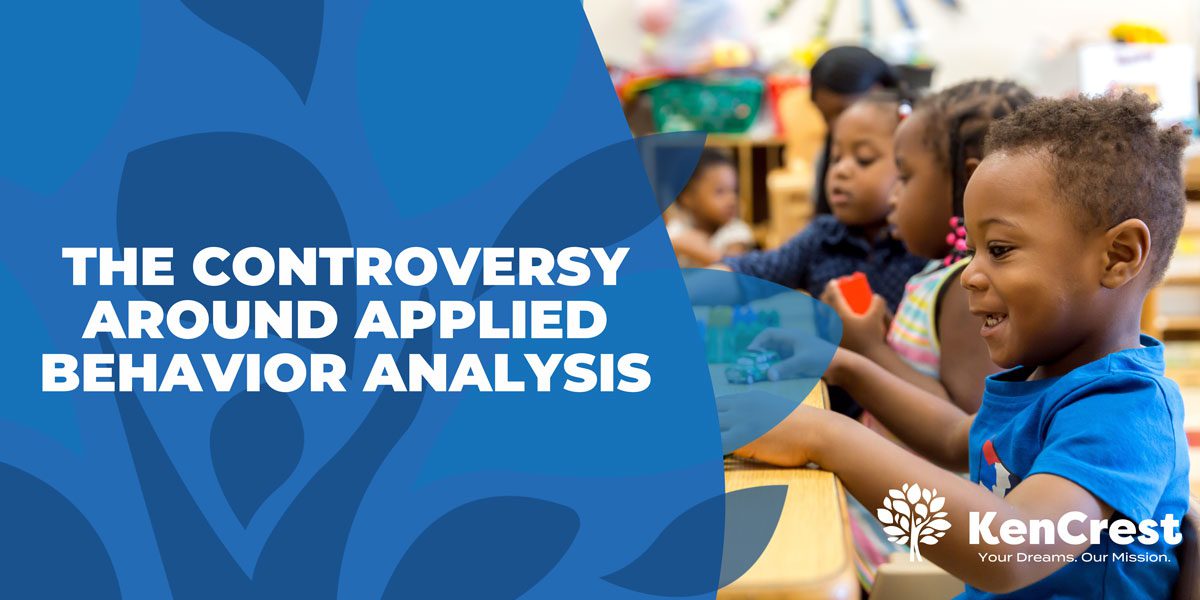
Applied Behavior Analysis has undergone scrutiny for its strict instruction, and these KenCrest experts discuss its influence.
By Sydney Kerelo
In the mid-1960s, Dr. Ivar Lovaas—a Norwegian-American clinical psychologist and professor at the University of California—developed the first form of Applied Behavior Analysis to teach language to children with autism.
Since then, Applied Behavior Analysis (ABA) has taken many forms and is used to reinforce certain behaviors through a strict drill-based intervention. According to the Behavior Analysis Certification Board, ABA involves teaching behavior “essential to functioning effectively in the home, school, and community. ABA can also decrease severe problem behaviors that endanger health and safety and limit educational, residential, or vocational options.”
Dr. Lovaas’s program involved 40 hours a week of intensive and rigid clinic-based ABA to reinforce good behaviors. But while his program proved successful, its practice is often controversial.
“ABA is a rigorous drill-based intervention for children with challenging behaviors, specifically children with autism,” says Roseann Adamo, KenCrest’s Executive Director of the Birth-to-Five Home and Community Based Program. “It’s the idea that we can increase reinforced behavior over time and through repetition while decreasing behavior that is not supported.”
With more than 45 years in education, Adamo has seen numerous children receiving ABA drills, and they are extensive. According to her, children will receive up to 20 hours a week of ABA drills, like putting pegs in a can or putting together puzzles, and at the end, their reward is a piece of candy.

“Because of the extensive drills, I’ve observed situations where the ABA person comes to the door, and the child immediately tried to get away,” says Adamo. “That’s not a good sign that this is working.”
The goal was to encourage growth for each child and elicit a response when addressed by parents or teachers appropriately—and it worked for a time until those children only used those skills in the setting taught in.

“In the long run, we’re not doing any healing; we’re only band-aiding the problem,” says KenCrest’s Director of Behavioral Health, Dr. Autumn Dae Miller. “Hundreds of autism sites talk about the anxiety caused by ABA and not being allowed to be oneself. Imagine if someone constantly repeatedly tells you that your stimming behaviors, which help you manage anxiety, are not allowed. You are going to develop other ways to cope, and sometimes that can be unhealthy and can lead to more severe illnesses like developing a gastrointestinal disorder.”
Dr. Autumn Dae Miller runs KenCrest’s Clinical Services department, working closely with children and adults looking for behavior, sexuality, and communication therapies. Many individuals she serves experience depression and anxiety because of their treatment as children.
“When these children grow into adults and turn 21, they go from that contingency-based world into one where everything is an option,” says Miller. “They have no concept of self, no choices have been their own, and that can cause them to become dependent on other people rather than learning how to be independent.”
At KenCrest, our Early Intervention program uses Positive Behavior Support, a model that uses basic ABA principles in a more impactful and progressive way.
When a child exhibits a challenging behavior, the first step in Positive Behavior Support is to identify why the behavior is occurring through a conversational behavioral assessment. The interventionist and the parent converse about the behavior and determine whether it’s tangible, escape, or sensory and the reasons. From there, they build up a list of what that child’s high interests are like, getting mommy’s tickles or hugs, and develop a plan of action to gain that child’s attention while teaching skills that will help them throughout their daily routines at home or school.
That’s where the ABA principles come in, but the difference is that the interventionist understands the child’s routines at home and can help identify the most challenging part of the day and build from there.

Positive Behavior Support builds relationships between the child and their parents, caregivers, or teachers who interact most with them.
“The child should learn what they need to do or what is acceptable in their environment and routines,” says Adamo. “It’s about interacting with the environment, building relationships, and teaching children with autism to utilize these skills in their daily lives.”
“We should be curious observers and earn the trust that has been consistently unavailable to people,” adds Miller. “We must constantly build a foundation of trust, connection, and understanding to help that child grow into a successful adult.”
Want to learn more about KenCrest’s Early Intervention program? Click the link below!
